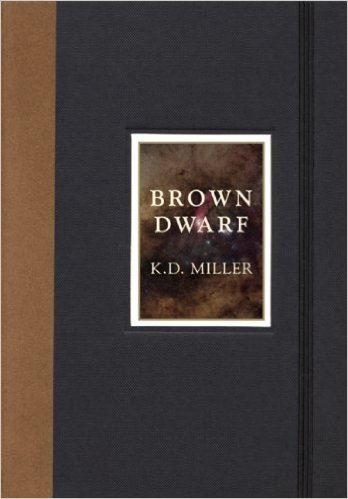 Barbara L. Black
Barbara L. Black
a review of
Brown Dwarf
By K.D. Miller
Biblioasis, April 2010
ISBN 978-1-897231-88-3
$17.95
KD Miller’s book Brown Dwarf, starts out sounding like a young girl’s Dear Diary entries, but creeps up on you with its increasing complexity and deft handling of an adolescent mindset. More than a mystery, it explores not only the limits of memory—how our perception of events shifts as we age and change into adults—but also the sometimes irrational dynamics of relationships between friends, and between child and parent.
Well-known mystery writer Rae Brand returns to her hometown of Hamilton and is beset by memories of a summer in her youth when she befriended an intense girl named Jori, who enlisted her in a search for an escaped serial killer. Over the summer, their friendship deepens and yet is fraught with complications, including intimations of sexual intimacy. The summer ends tragically with Jori’s unexplained disappearance and presumed death. As Rae Brand engages with her memories of that summer in 1962 and tries to understand her adolescent self—then known as Brenda Bray—the story intensifies from being a simple whodunit to a detailed psychological portrait of a young girl straddling childhood and adolescence.
Precocious, strong-willed Jori, who sleeps only in white sheets “until I lose my virginity” (60), is in some ways a strange choice for a friend. But wallflower Brenda, already frumpy and insecure in her clothes “For the Pleasantly Plump Child” (11) and vulnerable (her father is dead and her mother emotionally unstable), is attracted to Jori’s intelligence, drive, and edginess. They are two outcasts bonded by mutual alienation from the mainstream.
There are two story strands. Episodes in the younger Brenda’s life (in third person) alternate with the first-person present-day narrative of the older Rae Brand, who has essentially “rebranded” herself, almost disavowing her chubby, troubled younger self she refers to as “Bren-duh.” Miller channels the unassuming Brenda so successfully at the outset of the novel, that at first we almost fail to identify with her. Her friend, Jori, on the other hand, comes through loud and clear: slightly off-key, cunningly manipulative, yet somehow charming and disarming, or, as the older Brenda puts it, “a thin crust of brilliance over top of something essentially nuts” (25). Brenda is the titular “brown dwarf,” a character in crime fiction so bland and unassuming that he or she is never considered to be the main suspect.
Some of the narration feels a little too much like telling, especially in the first five chapters, where the alternating point of view prevents the reader from engaging fully in the story. However, after that point, the novel really grips the reader as the strands of past events become more entangled, and characters are more fully fleshed out, complicating and enriching the drama. The 12-year-old Brenda becomes a deeply affecting character as we watch her struggle to gain emotional maturity, disengage from Jori, and devise strategies to cope with and yet still love her volatile mother. Miller skillfully stretches out the tension to the final chapters, as further details about the two girls’ lives and emotional makeup are revealed. There are many sardonic lines, too.
Gradually, the reader is not so much concerned with the mystery “killer,” but with the underlying motives of the main character and the way in which as an adult she comes to understand, or even implicate, her younger self in events that unfolded years earlier. Brenda, her older self concludes, is guilty and not guilty by degrees in Jori’s disappearance. Through Rae, Miller illustrates the deceptive nature of a “brown dwarf” showing that, ultimately, we all engage in deception and self-deception in an effort to preserve relationships and ourselves. As Rae says, “[y]ou can’t get rid of your own past. You can deny it, forget it, lie about it. But it’s still there” (28).
By the end of Brown Dwarf, it is not entirely clear what transpired that summer, or on the escarpment between Jori and Brenda. Far from being a weakness, this demonstrates Miller’s skill in unpeeling the layers of human interaction and motivation. The novel is a bit of a brown dwarf itself, unassuming in its pellucid writing style, yet sustaining a tension-fraught narrative and multiple strands of dramatic irony. It’s not clear just where it belongs on the fiction shelves. While it reads well as an adult novel, it also deserves to join other well-crafted young adult novels which tackle the challenging passage of girlhood into adolescence.
Exclusive FreeFall Blog content! For more information about FreeFall magazine check out our website.

